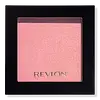Color: Bonbon
Color: Ravishing Rose
Blush
Blush
Filipino

Australian

What's inside
What's inside
 Key Ingredients
Key Ingredients

No key ingredients
 Concerns
Concerns

No concerns
 Ingredients Side-by-side
Ingredients Side-by-side

Show highlights for:
 Reviews
Reviews

4.00
Overall rating
5
4
3
2
1
What people say
Buildable
100%
Long Lasting
100%
Matte
100%